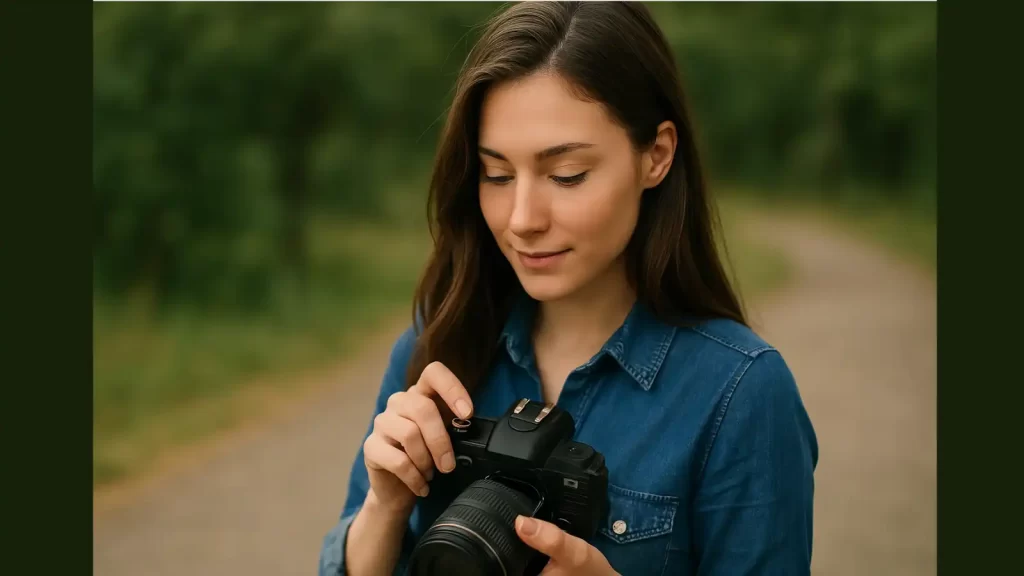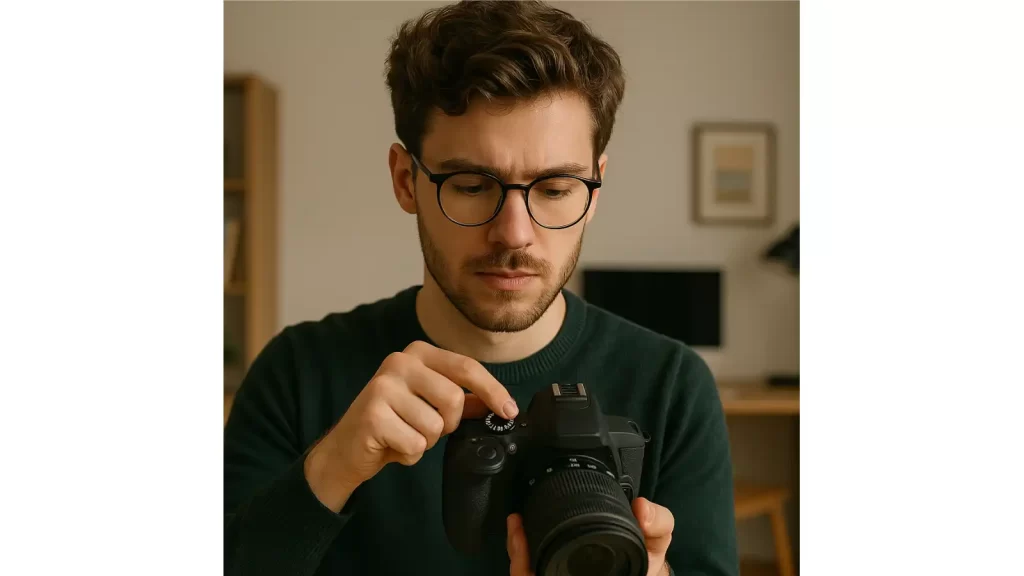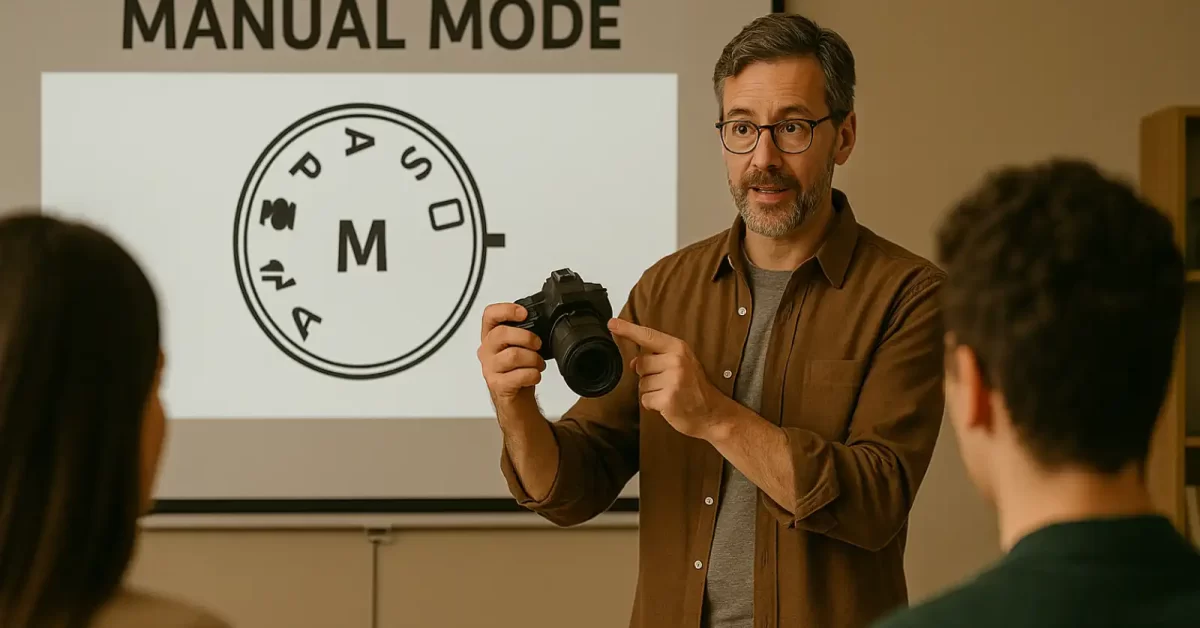Using this tips for using manual mode on digital cameras will enables users to operate the camera system autonomously.
Manual mode intimidates many photographers. A photographer can fully control their camera to generate outstanding photos through manual mode system operations. Many photographers encounter confusion when they try to work with manual mode, although they have heard about its existence.
Following this comprehensive guide, you can learn manual mode with total understanding. This article delivers precise information about controlling aperture and shutter speed and ISO settings to create the desired shot every time.
Too many photos remain average because you possess the power to achieve total control. Photos taken with Auto modes commonly produce inferior results when lighting conditions are complex or when moments experience swift changes.
Your attempts to photograph a sunset may result in either sky overexposure or foreground underexposure when using your camera. Frustrating, isn’t it? By using manual mode, you gain complete control to manage exposure settings while also having direct influence over focal point and depth perception.
Plenty of practice enables users to primary motion freezing followed by background blurring, which leads to expert-level image creation.
Beautified by manual mode is its feature that enables photographers to bring their creative vision to life. Through your control you decide both the intensity of lens light entry and the distance of background focus while specifying exposure duration on the sensor.
Taking full control of your camera functions allows you to develop from taking standard photos into creating art-based compositions. Time to step in.
The Basics of Manual Mode Explained Simply

People should understand what features manual mode provides together with its operational principles. Assuming control of your camera operates better than leaving it on auto-pilot mode.
When photographers select manual mode it lets them modify the three camera settings of aperture and shutter speed and ISO for their pictures. The quantity of light and the focused portion of your image are determined by three specific camera settings that work together as a single system. Breakdown begins starting from the first setting.
Control of entering light intensity occurs when light passes through the aperture component of the lens. The depth of field receives direct influence from aperture settings that determine the amount of photo area that stay in focus.
A camera with aperture set to f/2.8 allows abundant light entry simultaneously producing out-of-focus backgrounds that work specifically for portrait photography. A narrow aperture (e.g., f/16) provides complete image sharpness that is suitable for landscape photography and group portraits.
The photometric sensitivity of cameras can be adjusted through control measures based on the ISO standard. Photographers who want to stop moving objects must set their shutter speed at the quick 1/500 second. A proper exposure for catching birds in flight needs to be short to prevent motion blur of the subject.
Using shutter speeds set to 1/30 second generates motion blur that photographers benefit from when documenting flowing water elements at night and creating light trail effects. Grainy images will be absent when you set your camera to work with a low ISO value, such as ISO 100, in bright lighting.
The sensor can achieve better light sensitivity through raising the ISO value to either 1600 or beyond, based on lighting conditions. High ISO settings generate noise that affects image quality negatively, but users need to exercise carefulness.
Grab your camera now. One modification at a time should be applied to observe the variations between images. Begin by taking photos of non-moving objects such as flowers, followed by taking pictures of stationary buildings that are moving. The real understanding of different camera settings requires performance of practical lab work.
Step-by-Step Guide to Shooting in Manual Mode
Ready to take control? The following guidelines will help you begin shooting with manual mode as of today.
1. Set the ISO First:
Select your ISO value according to lighting conditions before beginning. Set day lighting conditions with ISO 100 while dim lighting requires an increased value of ISO 1600.
2. Adjust the Aperture:
Your choice will be between crisp or soft background areas. The aperture of Shadowgraph’s camera needs to be set to f/2.8 when taking portrait images. The aperture value should stay at f/11 or f/16 for landscape pictures.
3. Tweak Shutter Speed:
Make shutter speed correspond to the topic you want to capture. The shutter speed setting should be 1/250 second to capture sports and wildlife scenes effectively. For immobile objects, using shutter speed at 1/60 second will deliver satisfactory results.
4. Check Exposure:
The camera’s meter helps users achieve correct brightness levels during exposure measurements. Use aperture widening together with longer shutter durations or increased ISO to make dark images appear brighter according to the meter.
It is advisable to begin with stationary subjects, including flowers or buildings, as your first step before attempting to photograph moving objects. Practice makes perfect. By experimenting more frequently, you will acquire a clearer understanding of how these camera settings interact as one system.
Common Challenges and How to Solve Them
The majority of camera operators struggle with manual camera expertise development. Let’s tackle some common issues:
- Harsh Shadows:Negative shadows in photos develop because of intense or directional lighting. The solution involves both sliding shutter speed settings lower or opening up aperture dimensions wider to enhance available light levels. The use of a reflector or fill flash as lighting tools offers an alternative solution to minimizing shadows.
- Blurry Photos: Shutter speed and camera movement produce the main reasons behind blurry pictures. The solution to avoid blurry images involves two methods: lengthening shutter time and using a tripod. When using handheld shooting, keep your shutter speed faster than the inverse of your focal length number. The operational speed for a 50mm lens should be 1/50 second or faster.
- Overexposed Images: Strong illumination of the sensor causes exposure to exceed safe levels. The correction of such issues requires you to reduce ISO numbers while increasing aperture opening or shutter time. Inspection of your histogram will verify proper exposure balance.
Do any of these difficulties present themselves to you? Share your experience. Learning photography requires coping with challenges which every photographer must encounter. Detecting the source of the issue is critical before executing any modifications.
When to Use Manual Mode vs. Other Modes
Humans should not autoselect a manual mode for every situation. Not necessarily. Following are the situations that require manual camera mode and those that require you to use another setting.
When to Use Manual Mode:
- Studio photography where lighting is consistent.
- The photographer took landscape photos through specific lighting control.
- Situations where creative control is essential, such as long exposures or shallow depth of field.
When to Avoid It:
- Fast-paced events like sports or wildlife where quick adjustments are needed.
- Street photography where spontaneity is key.
The camera performance will be optimized through aperture priority or shutter priority settings in some specific situations. Your complete creative freedom only comes from manual mode, but choosing appropriate modes depends on achieving success. The portraits benefit from aperture priority mode since it enables users to manipulate depth of field settings while the camera completes all remaining operations.
Tools to Make Manual Mode Easier
Learning manual mode will not prove difficult for photographers. This reference includes several tools which will facilitate your learning process:
- Cheat Sheets: Keep a quick-reference guide handy. The summary format of cheat sheets shows you both essential camera settings, along with their effects for better memory retention.
- Histogram: Your tool helps to evaluate the current exposure levels in your images. The visual assessment of tonal distribution through the histogram tool enables you to prevent under- and overexposed regions in your images.
- Tripod:The camera extends shooting time along with providing effective results in reduced lighting conditions. A tripod offers camera support that prevents motion-induced blurring because of hand movement.
Obtain a free downloadable cheat sheet immediately to reduce your learning complexity. The mentioned tools can help you work faster while reducing your frustrations. Cheat sheets help beginners who need practice developing their confidence skills.
Real-Life Proof of Manual Mode Success

To understand manual mode, better check how other photographers use it effectively.
- James is a photographer who used manual mode to capture sharp stars in a night sky. Stunning images resulted from applying f/11 on the aperture while setting both shutter speed at 30 seconds and ISO at 100.
- A wedding photographer Kenneth created perfect bokeh for romantic portraits. The photographers achieved a couple-focused portrait by using an f/2.8 wide aperture together with a 1/250 second shutter speed and an ISO of 400.
Everyone who took up photography began in the same uncertain but resolved position as you did. Training in manual mode extends for a period that proves anyone can master this particular mode. What does your first creative creation shape out to be?
Why Manual Mode is Worth the Effort
Manual mode provides a specific set of benefits that justifies your investment of time. Consider these benefits:
- Greater creative control.
- Sharper, more professional-looking photos.
- Skills that last a lifetime.
Manual mode learning functions lead you to outstanding photography results and fewer instances of throwing away photos. Isn’t that worth it? Using auto modes leads users to experience restrictions in their photographic self-expression. This mode enables photographers to produce images that specifically showcase their artistic point of view.
Start Mastering Manual Mode Today
Put an end to your camera control and begin operating it yourself. Start practicing manual mode with only a single camera setting. Practice daily to build confidence. Time is limited. Starting as soon as possible will lead to quick improvement of your skills.
Take your camera from its resting position immediately. Open the manual mode setting, then start experimenting. A photograph of outstanding quality awaits your camera lens.
Don’t let fear hold you back. Every expert started their careers as an individual who was new to the field. Today’s initial step will lead to photography transformation, so make your move now.
Read Related Post: How to clean a camera lens without scratches?

